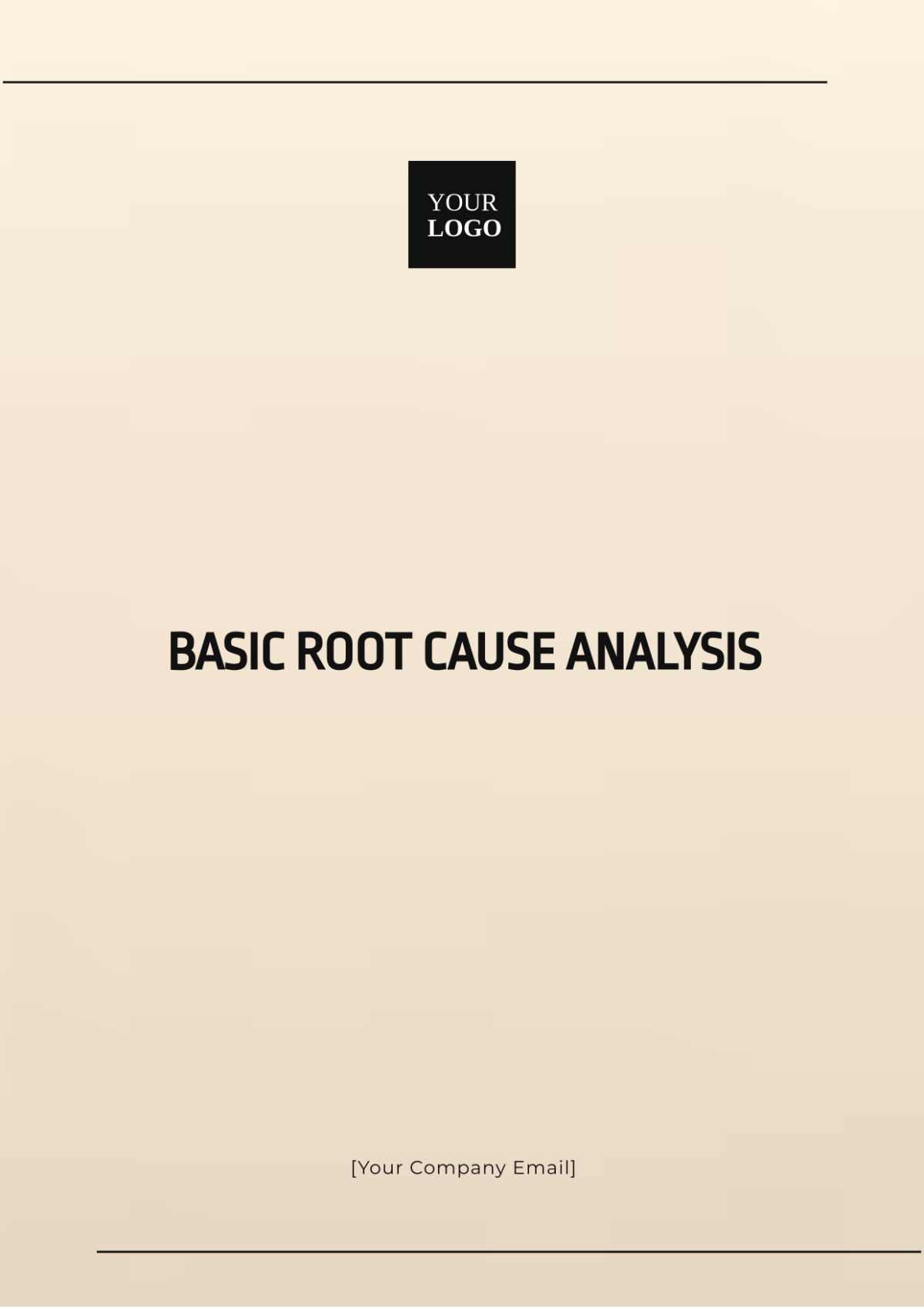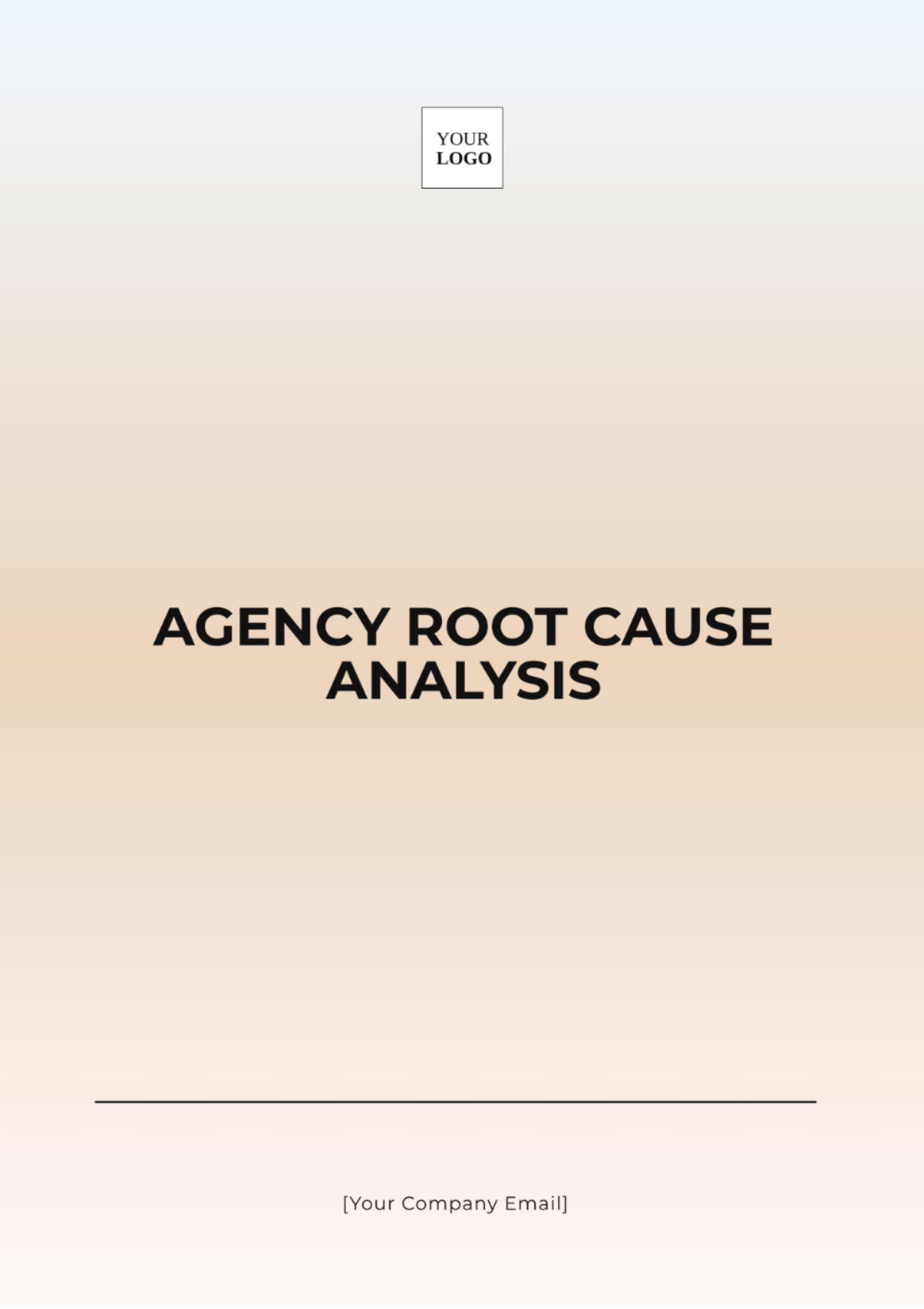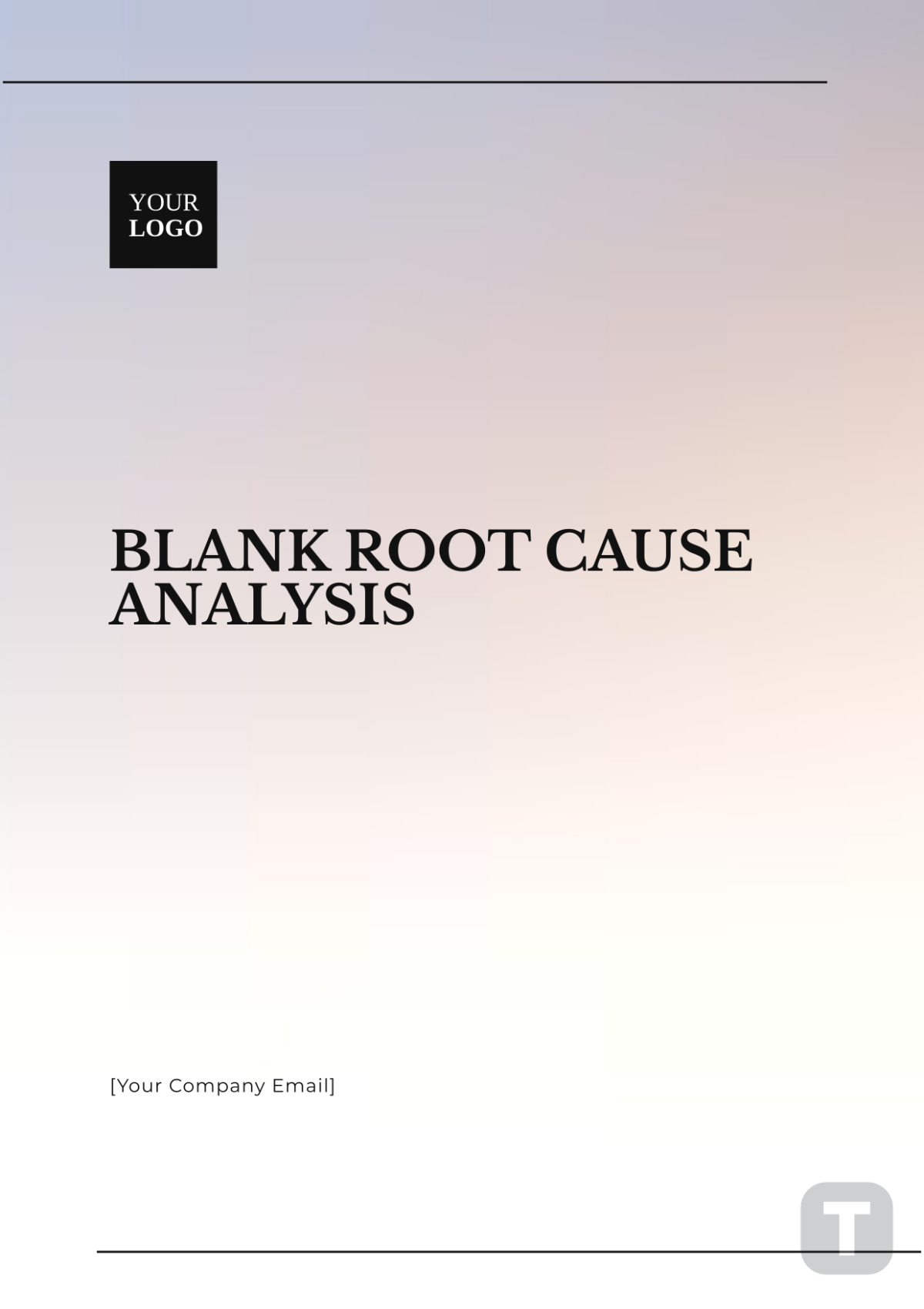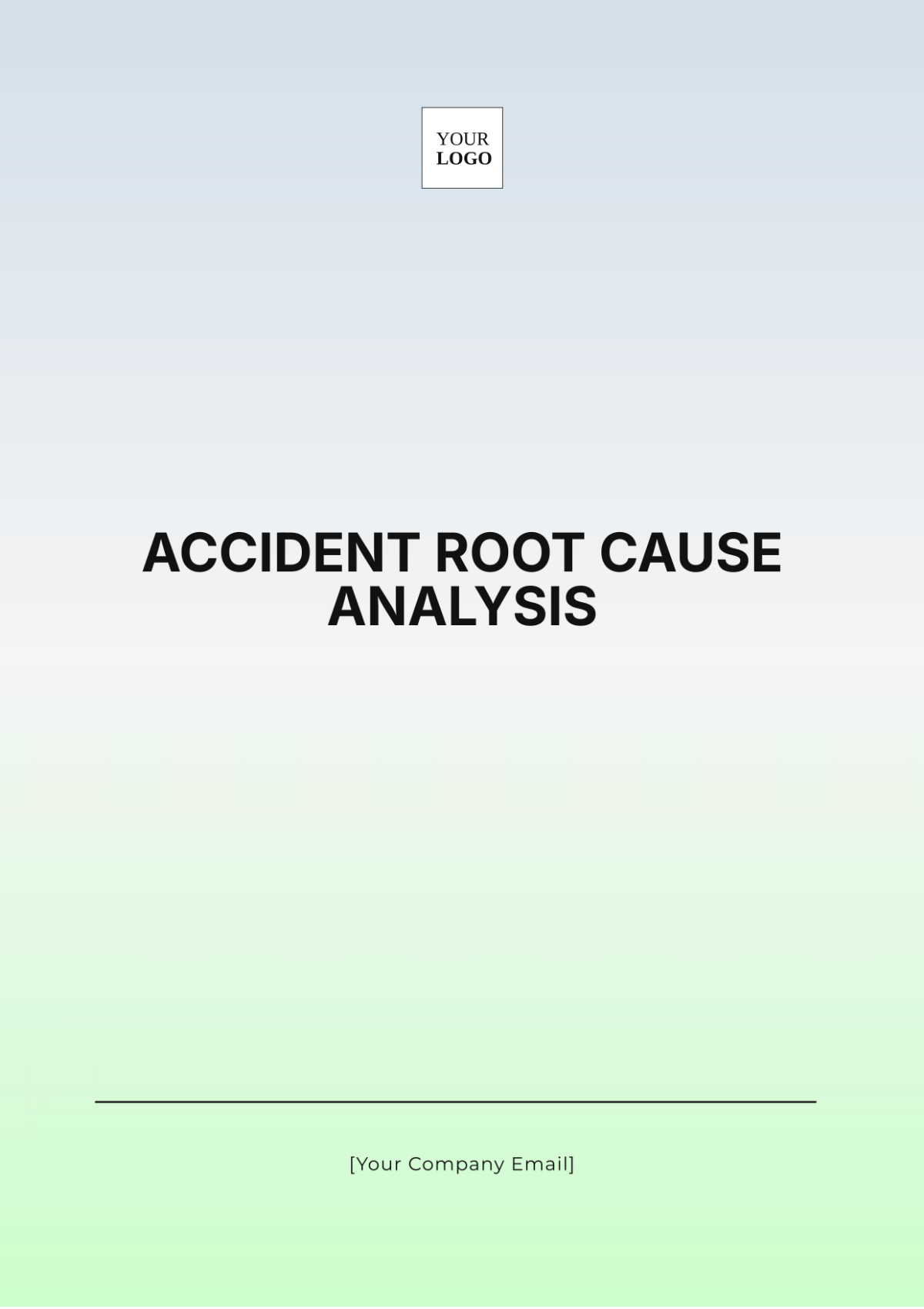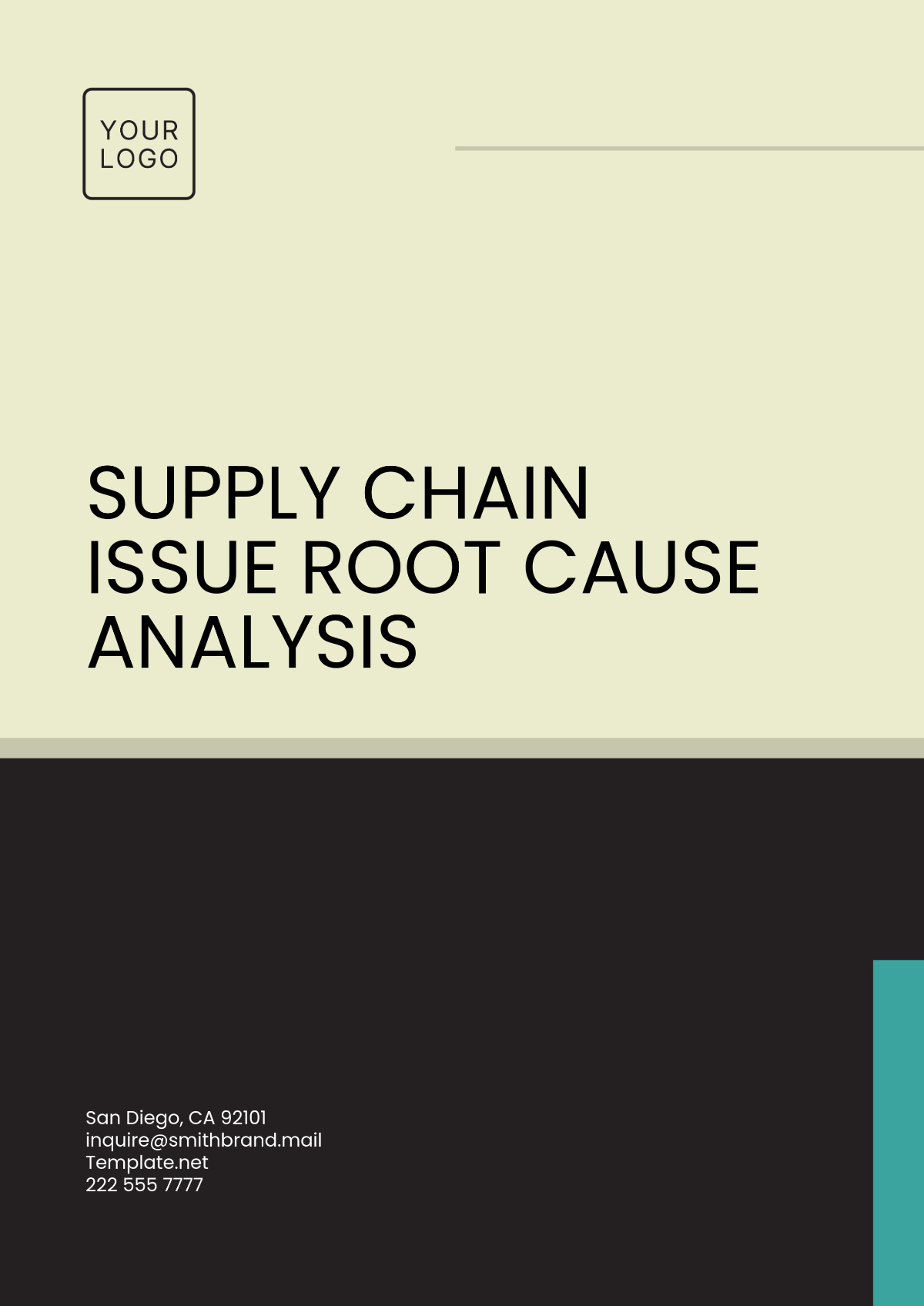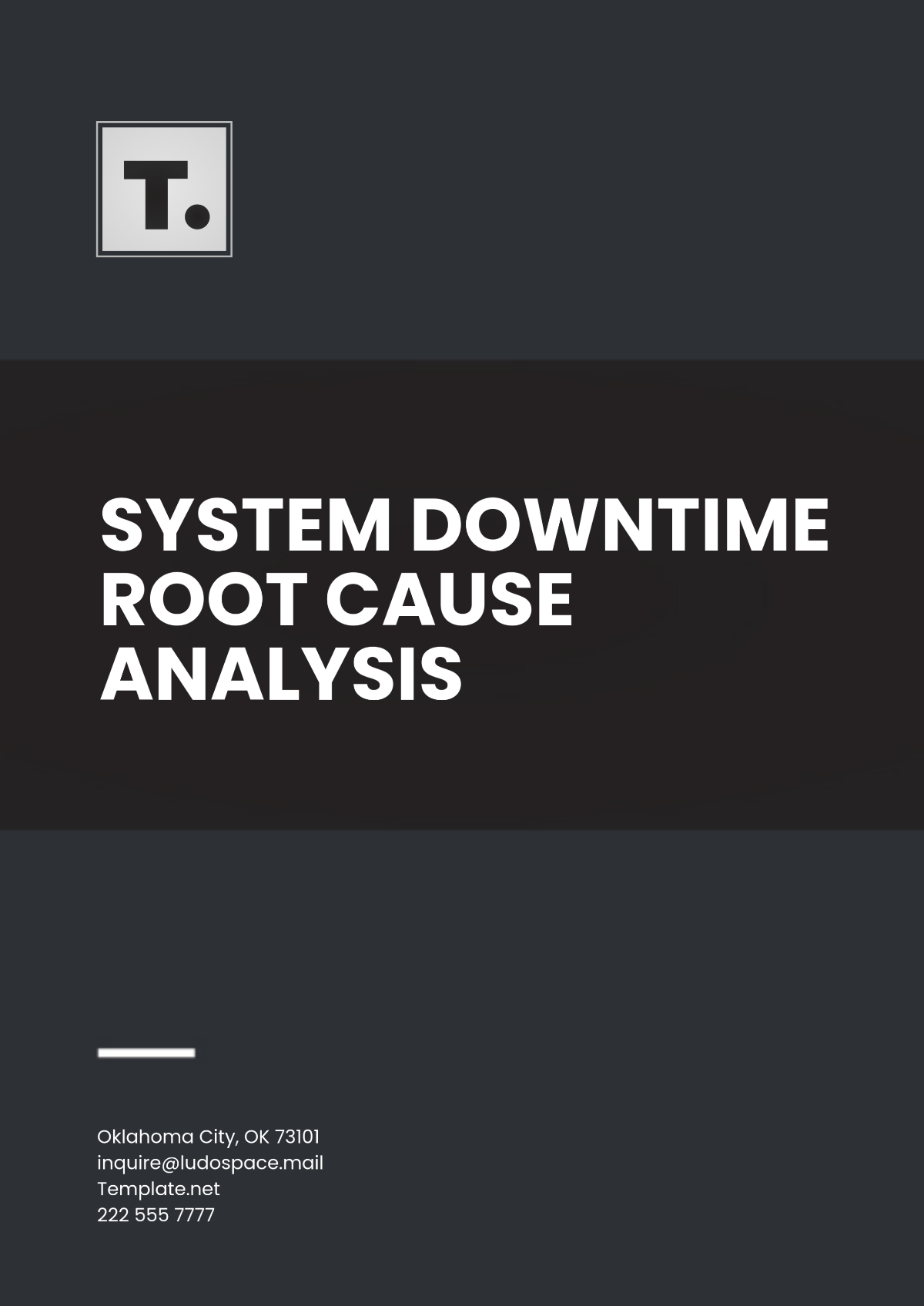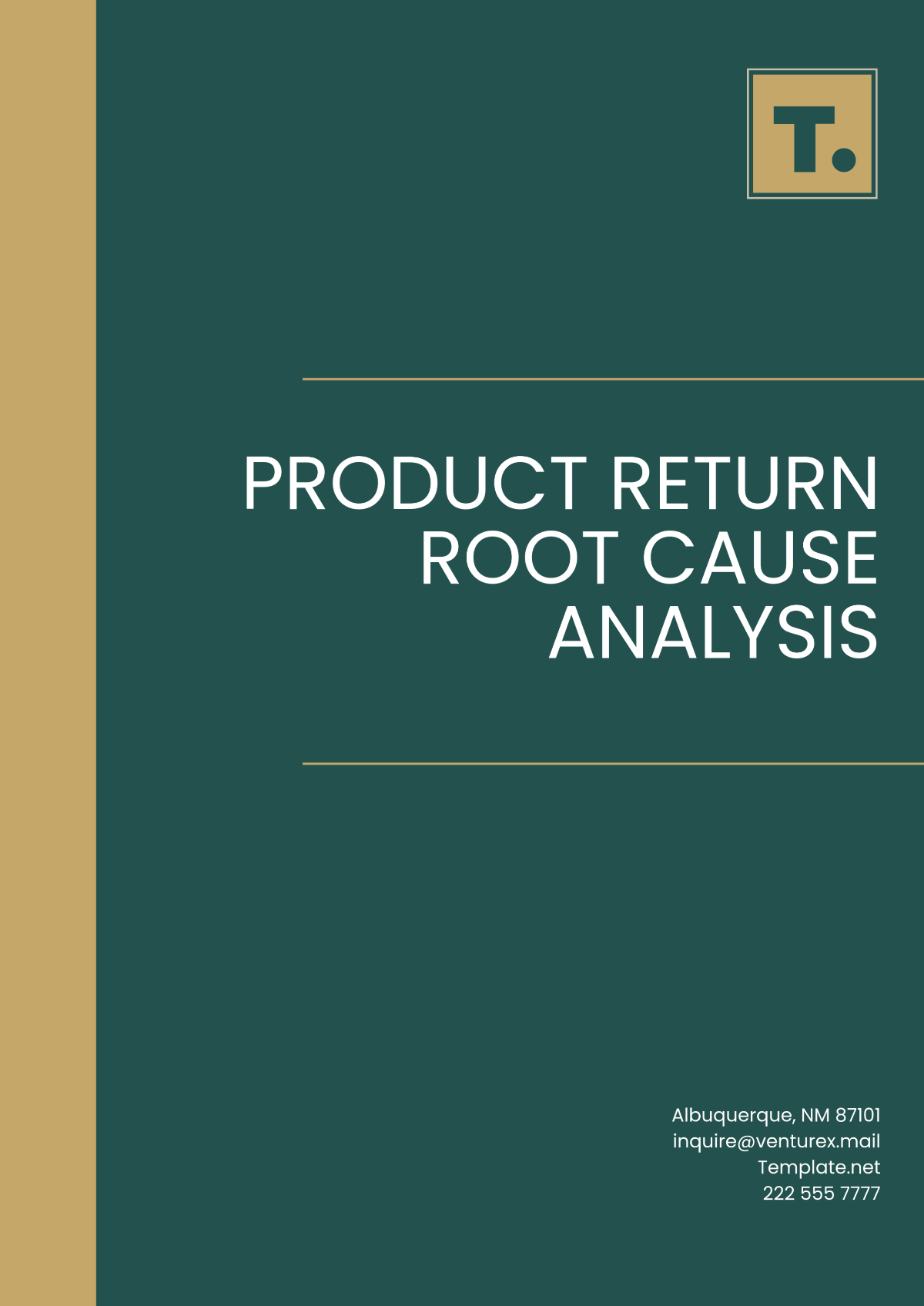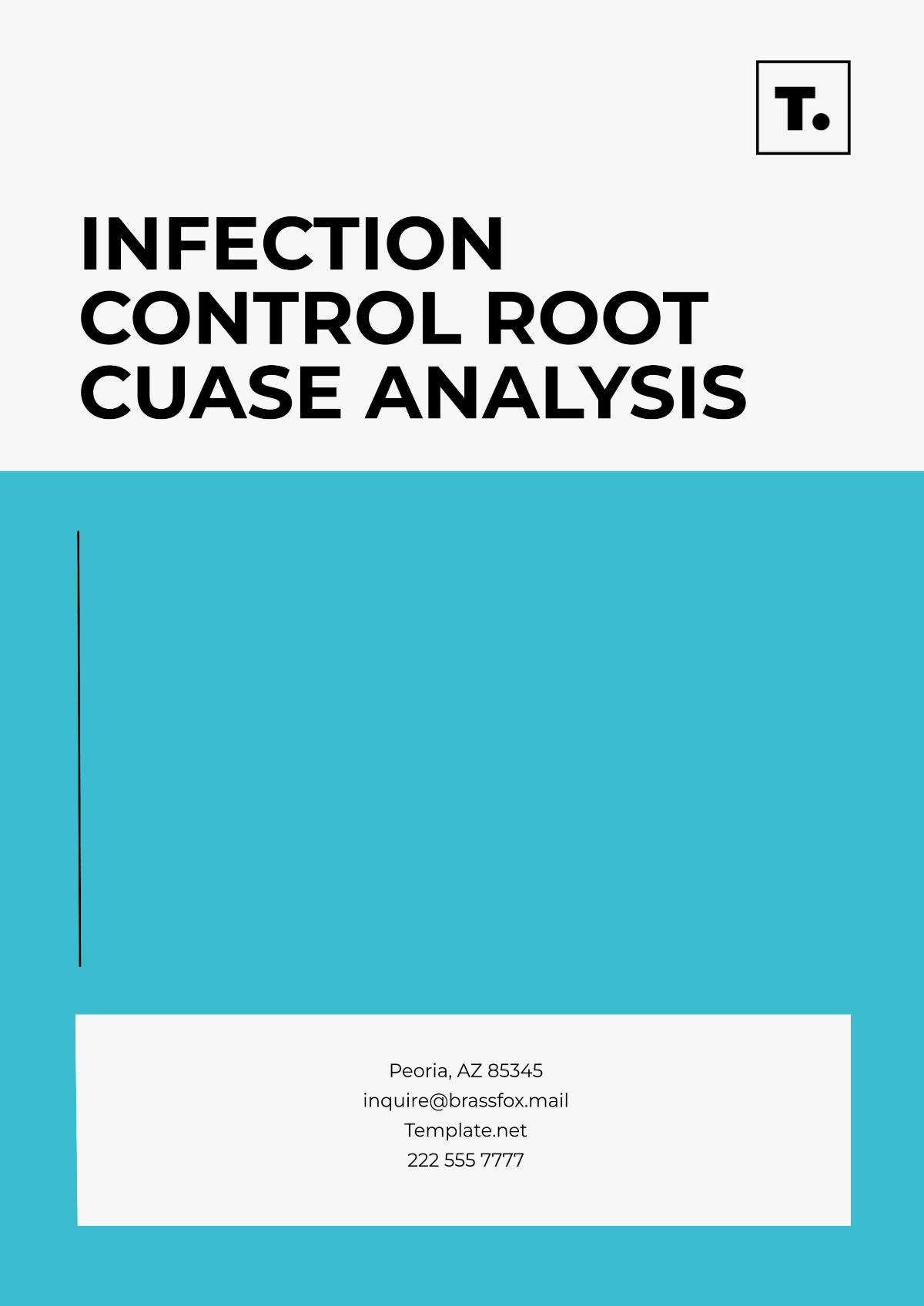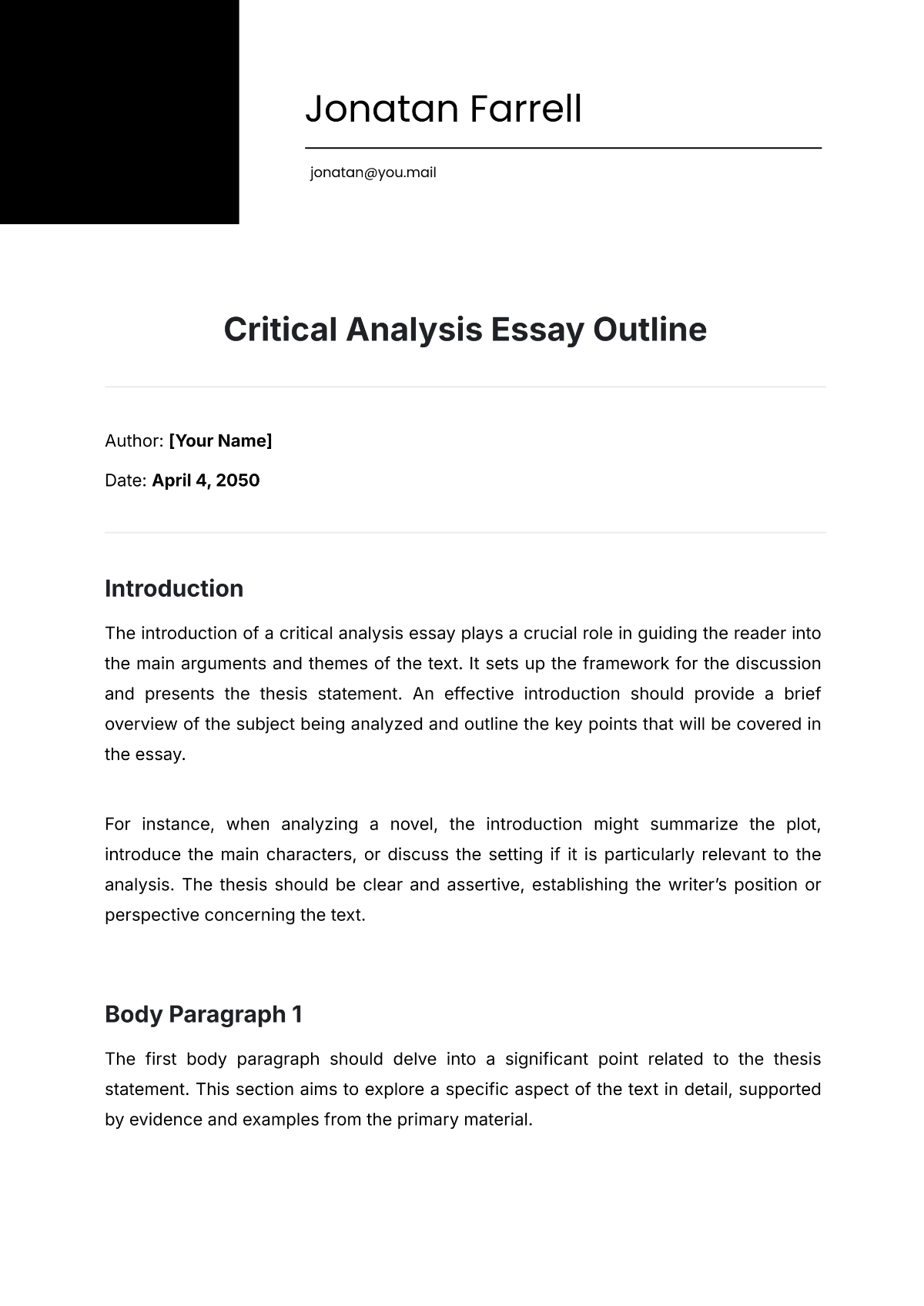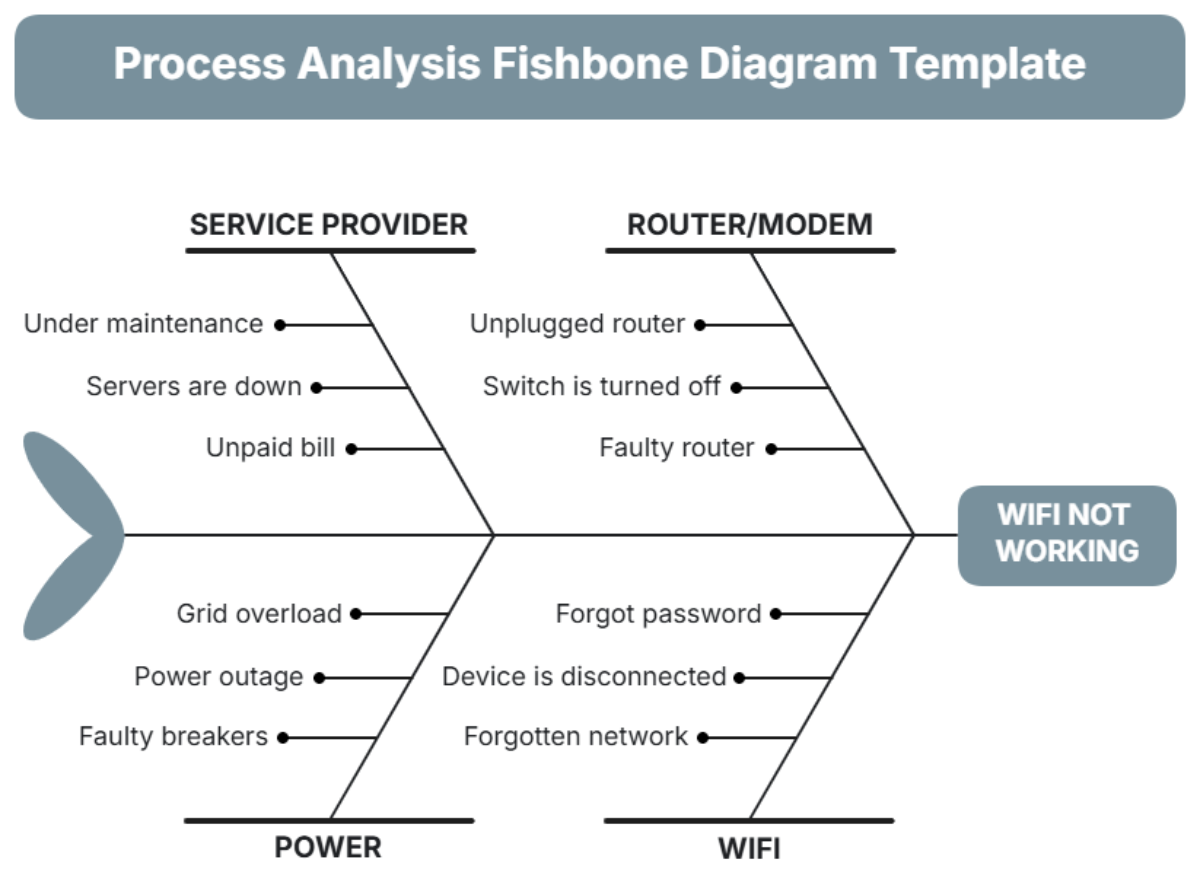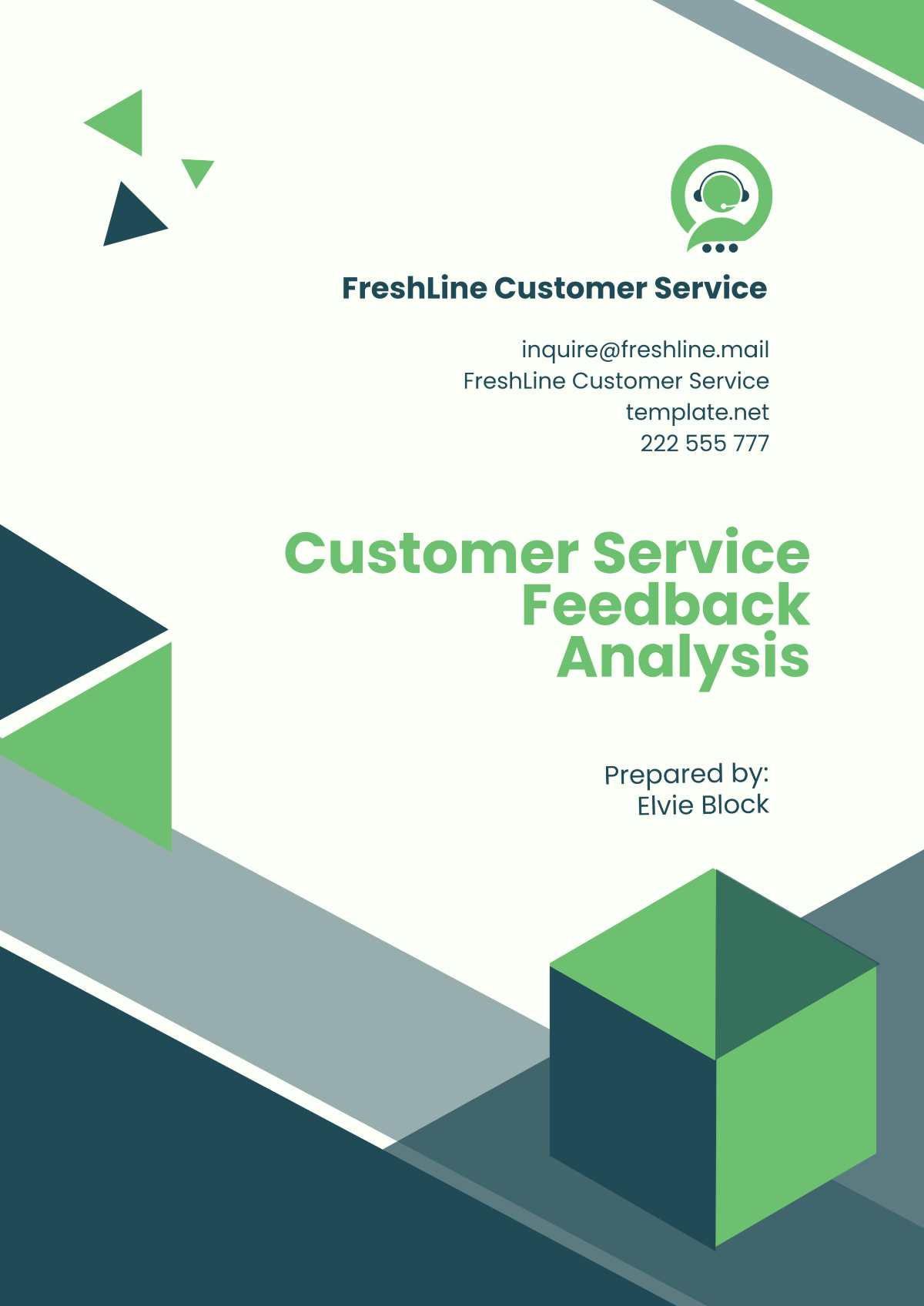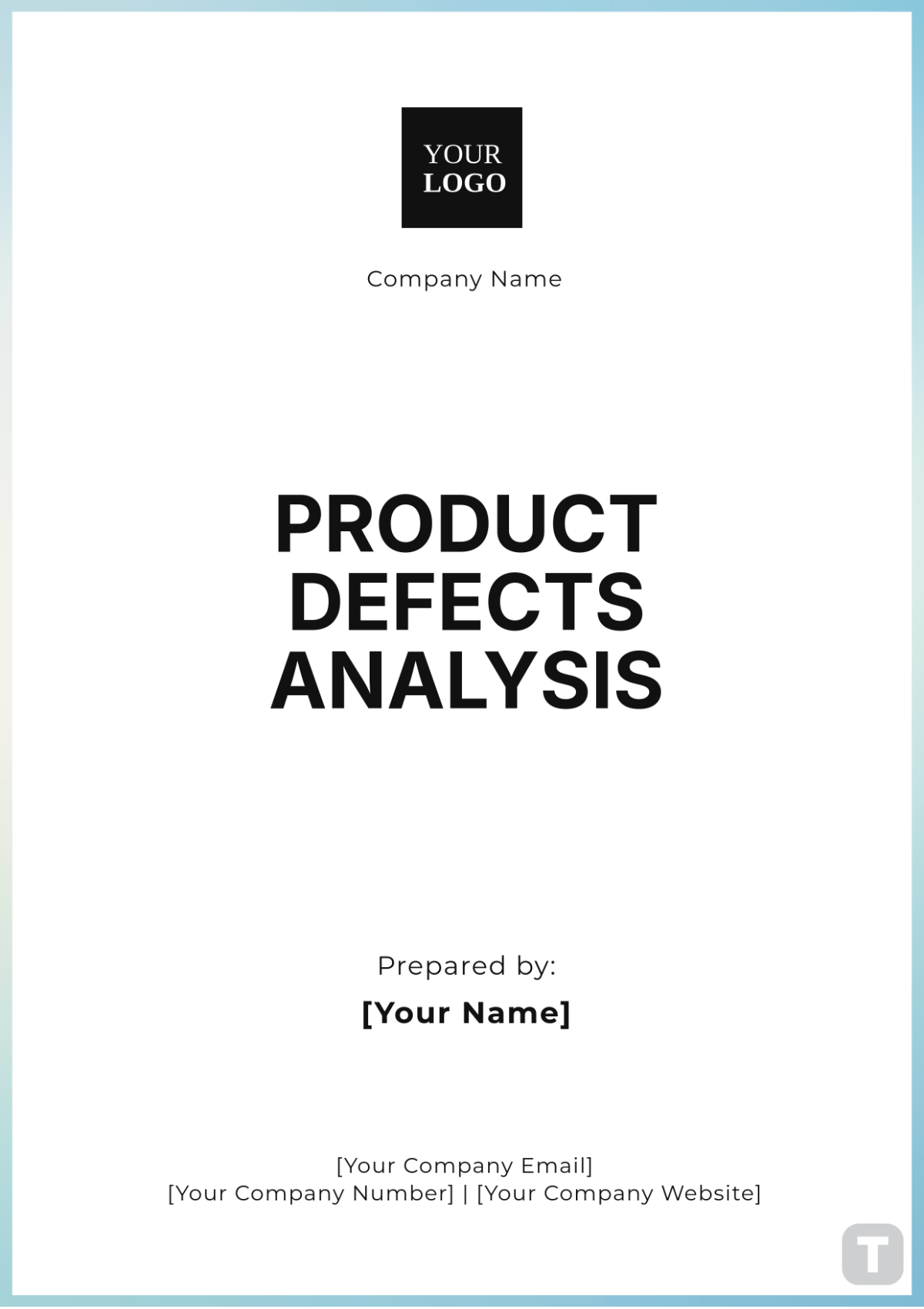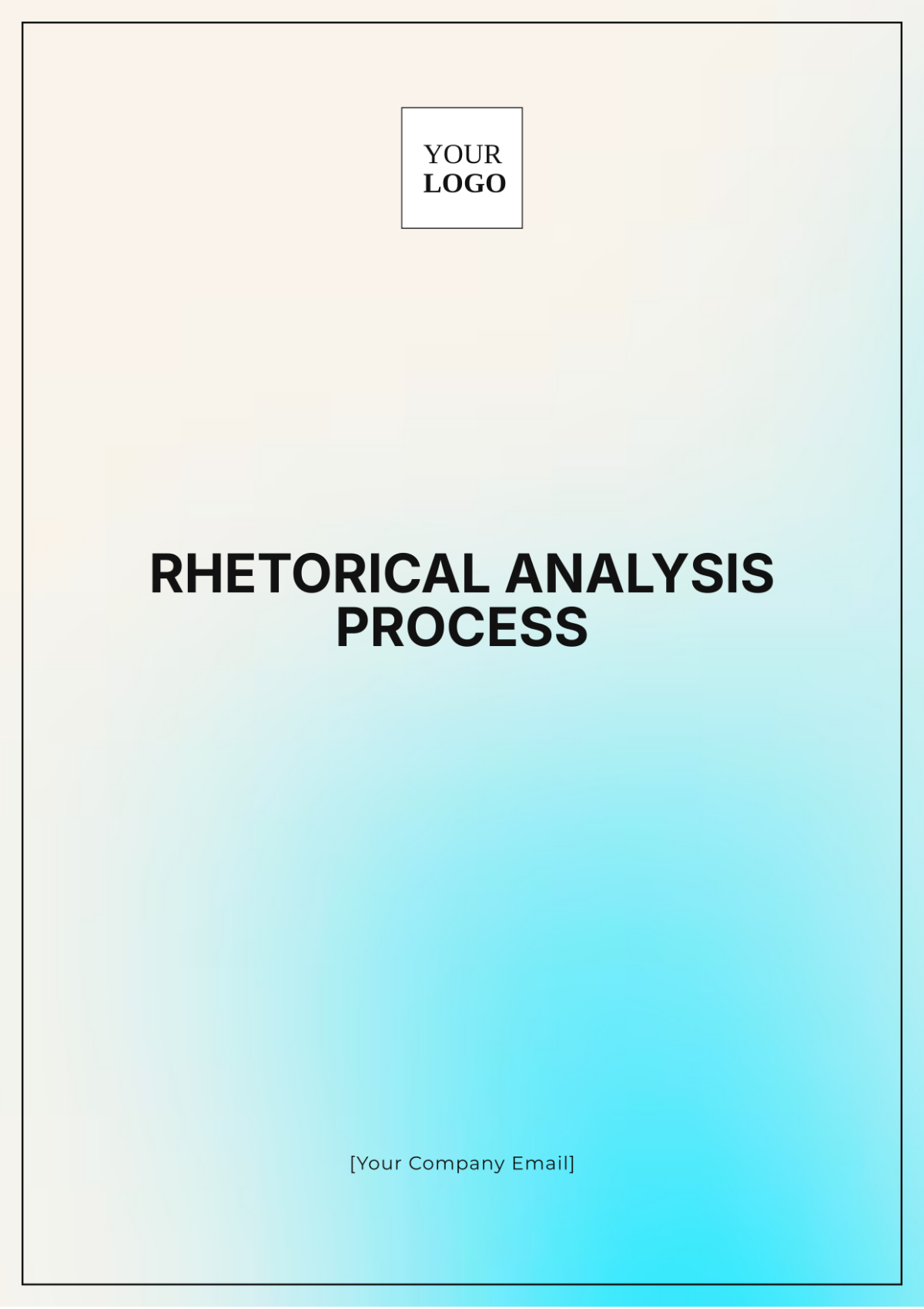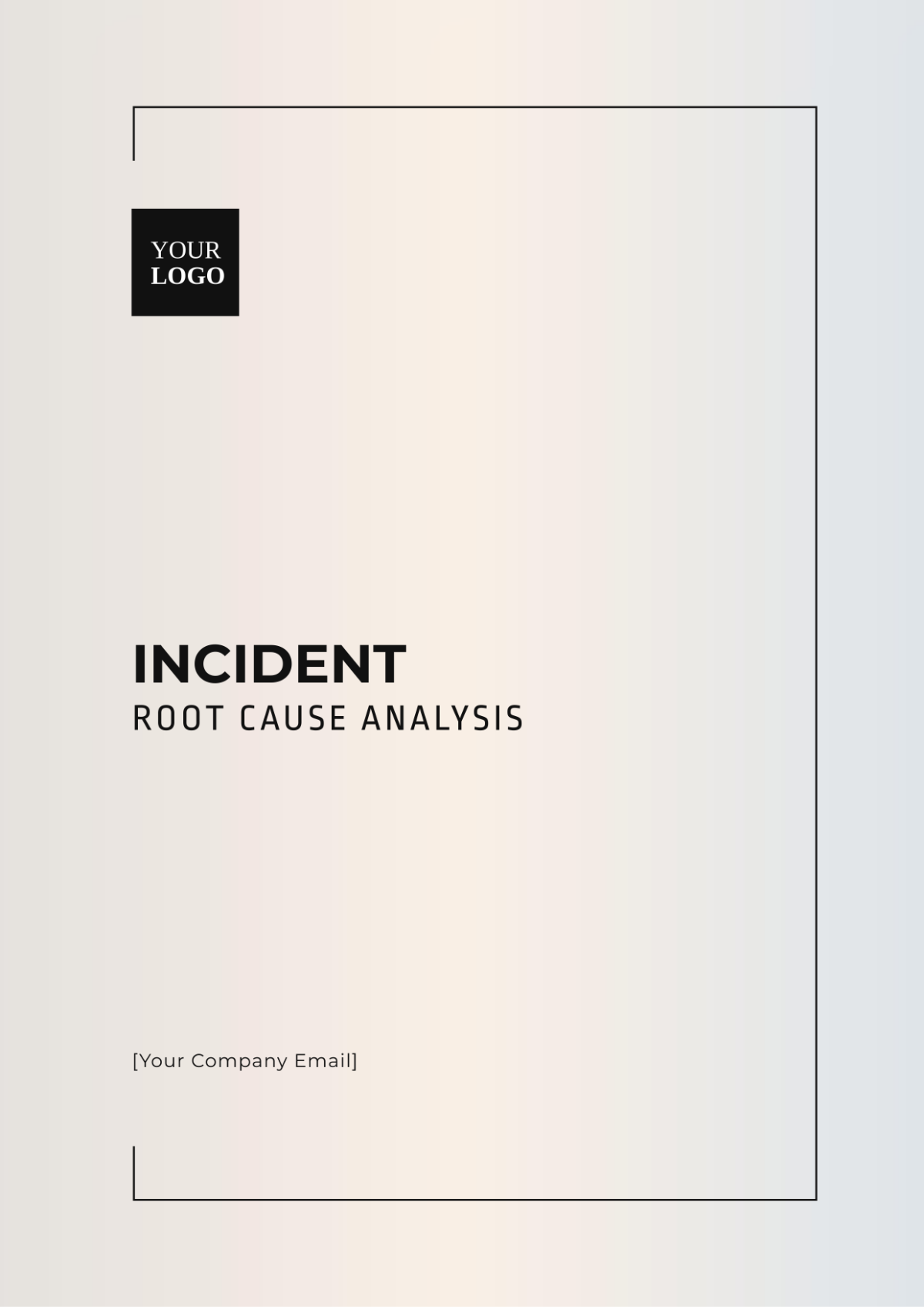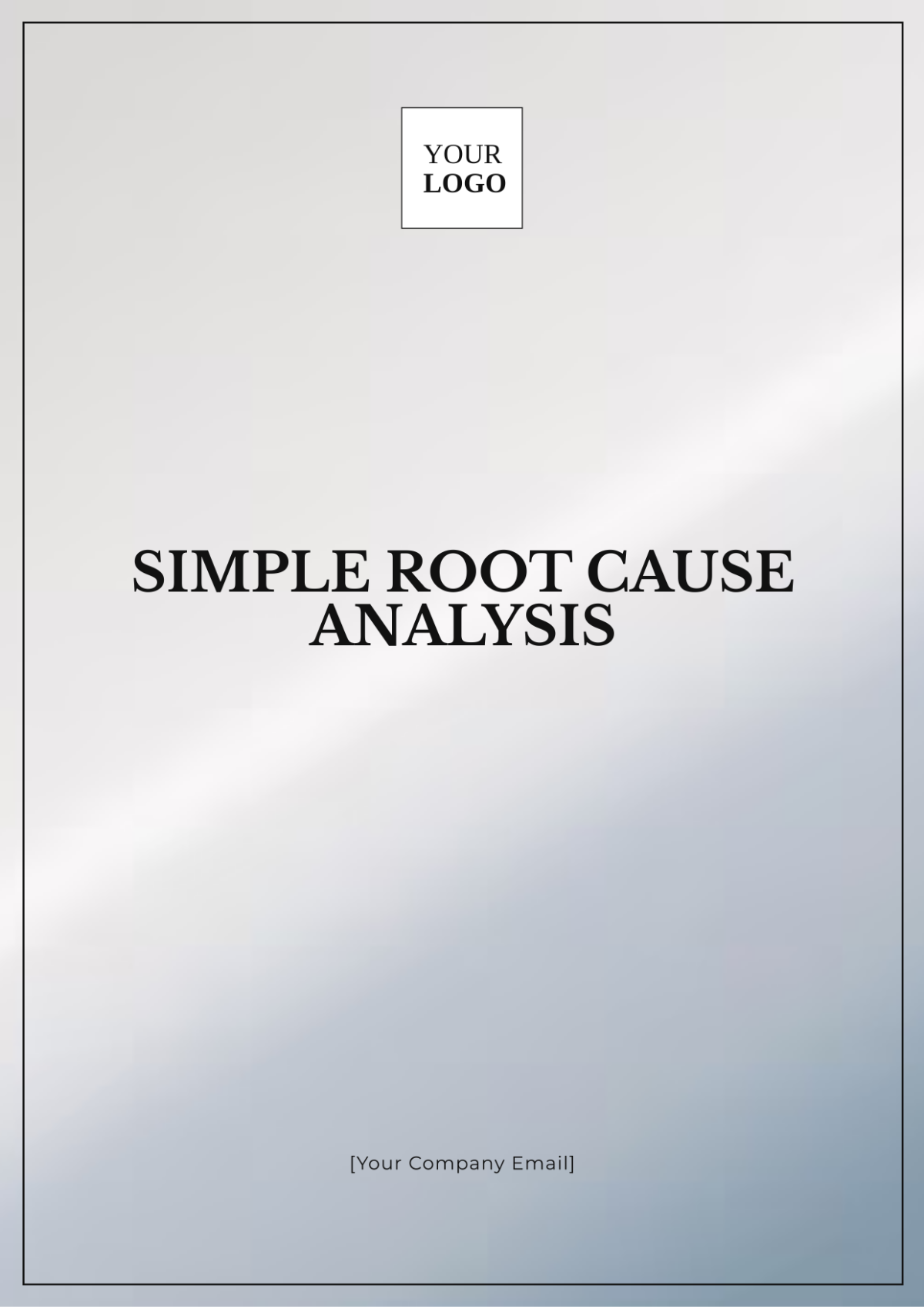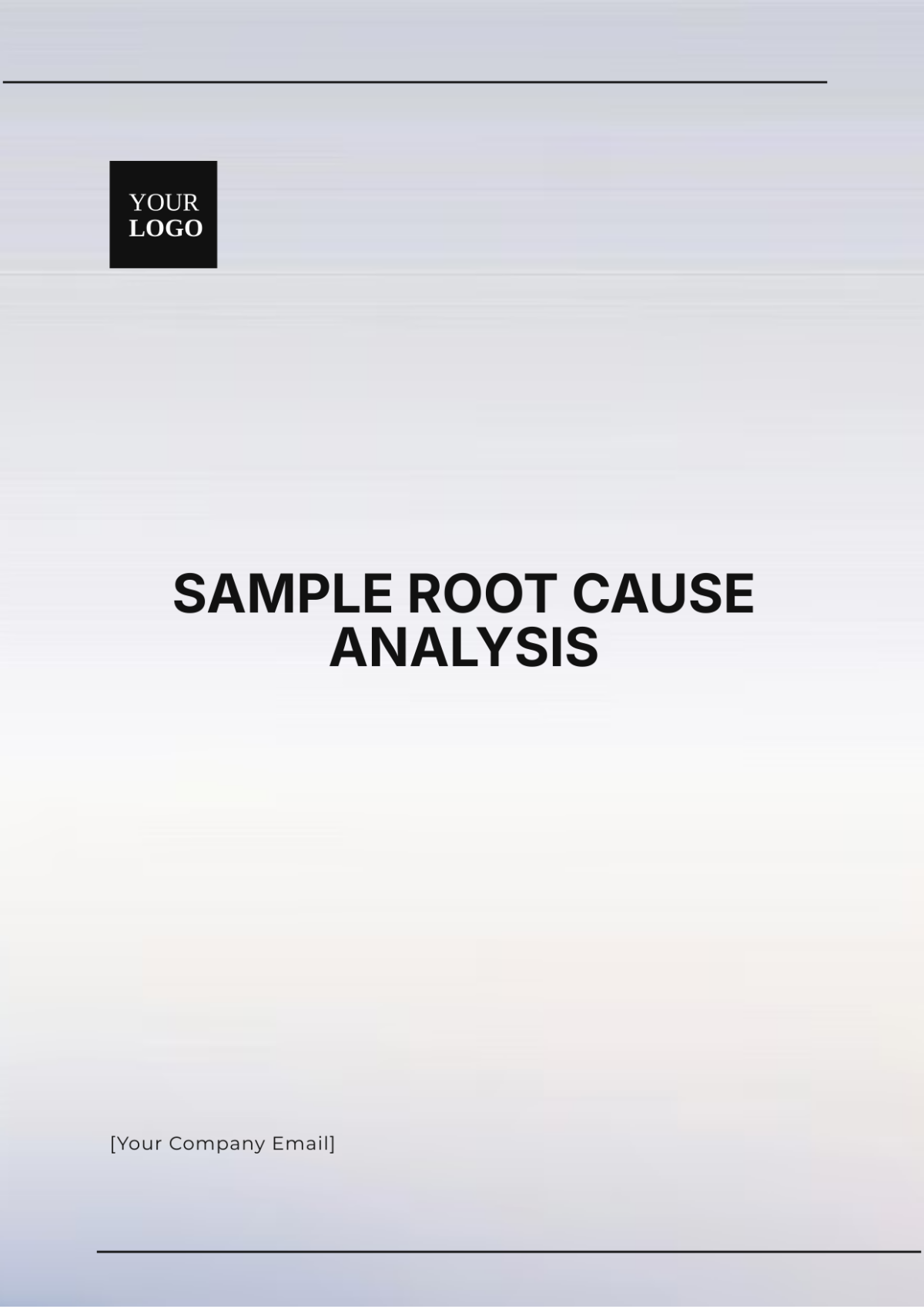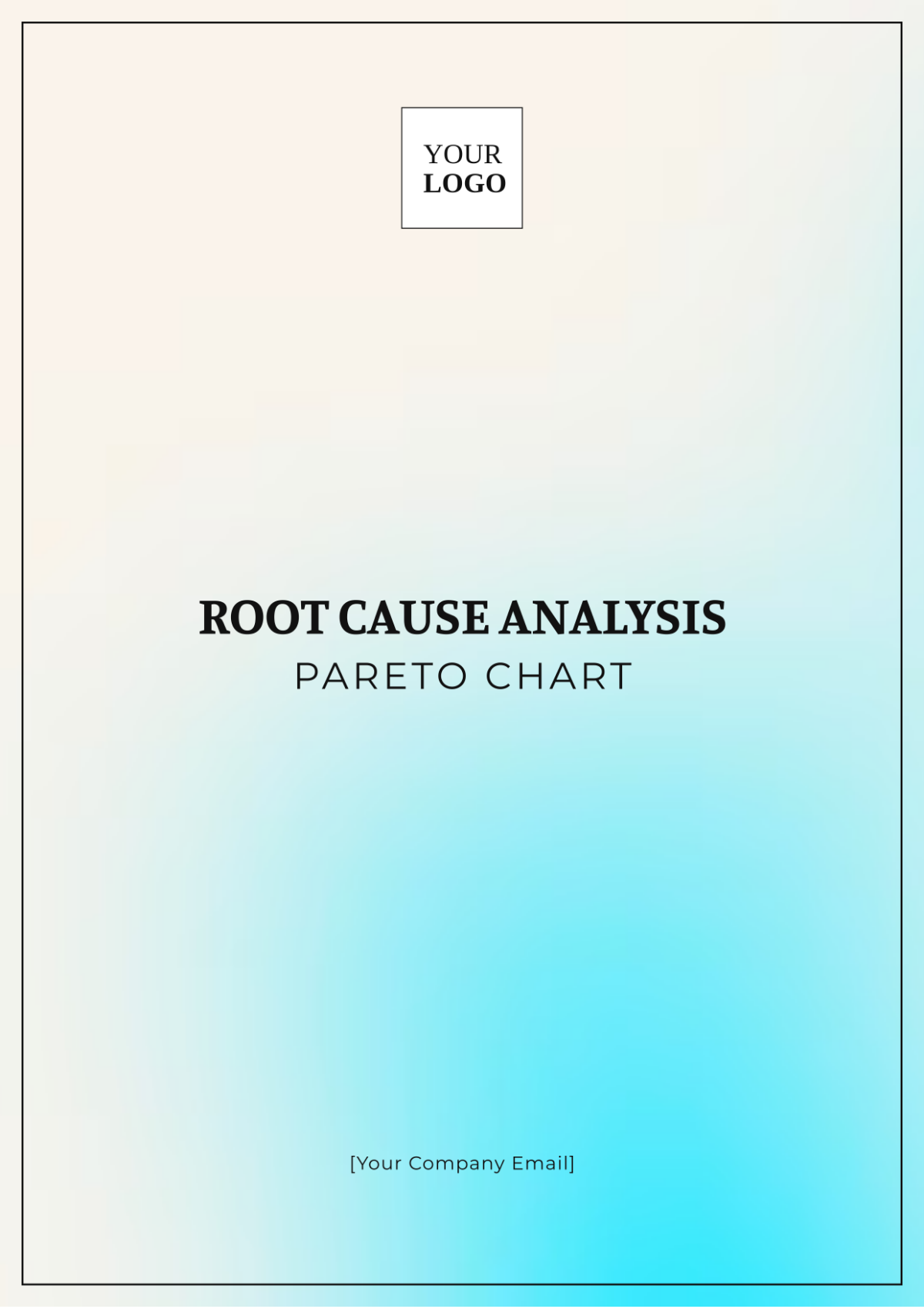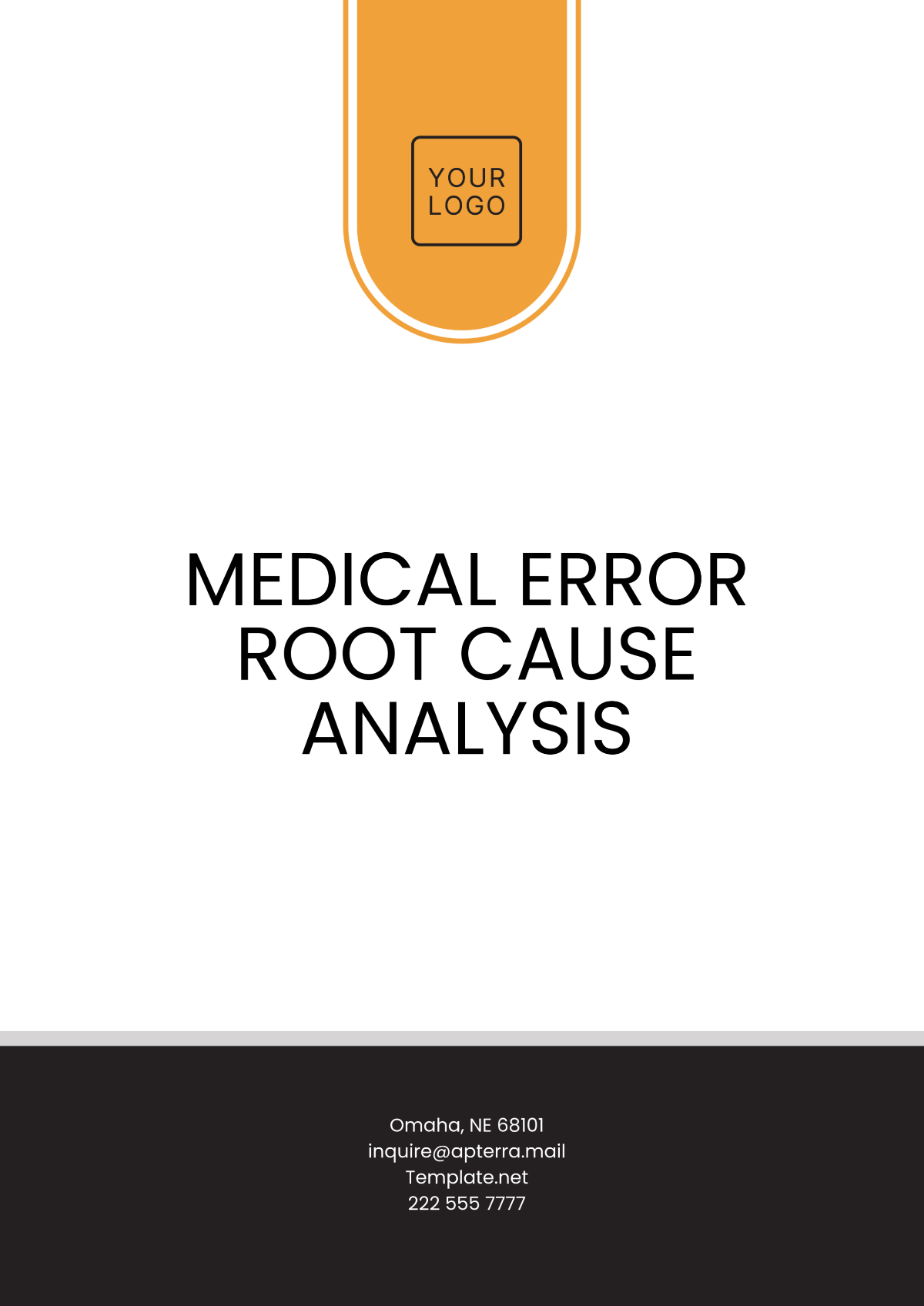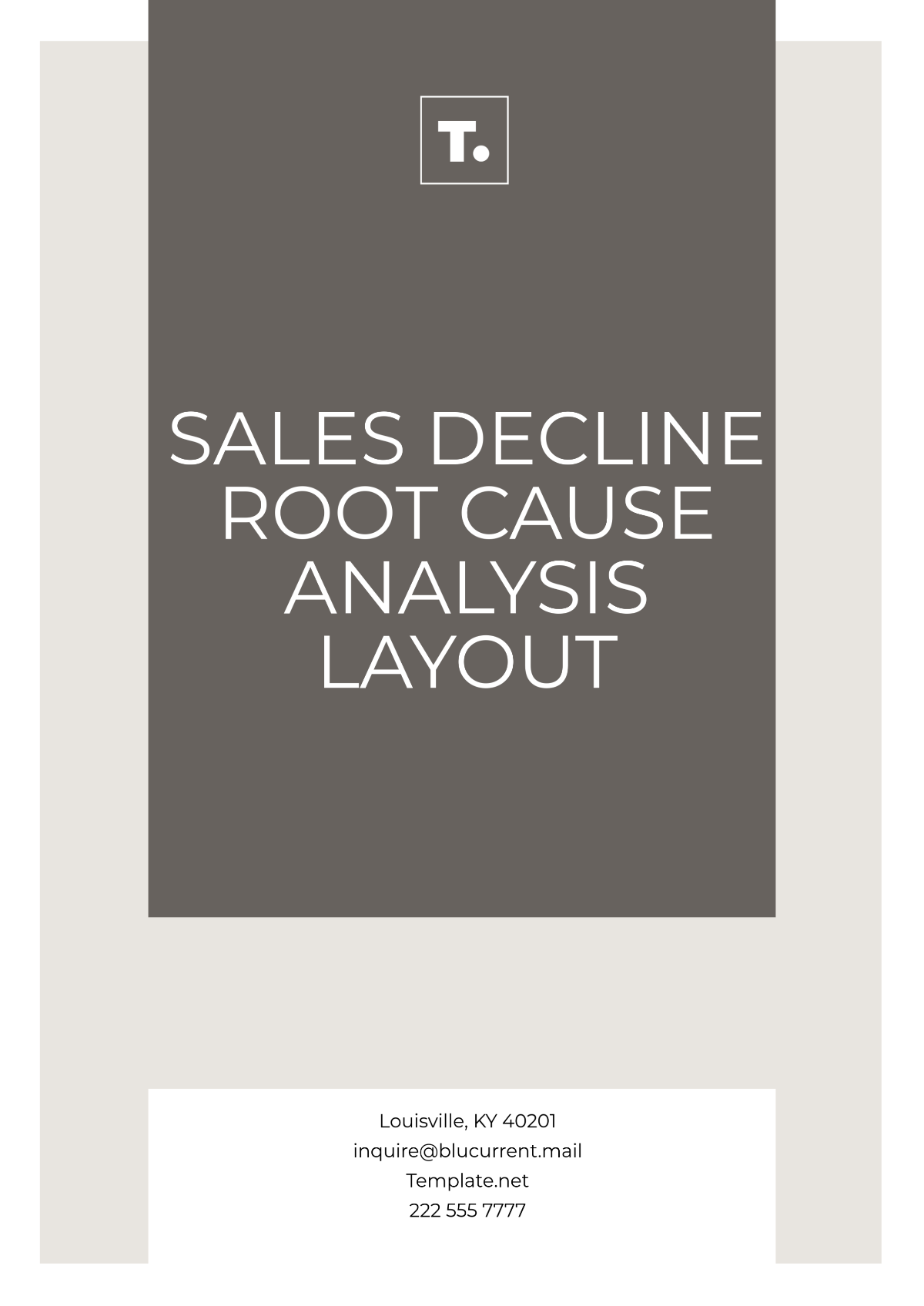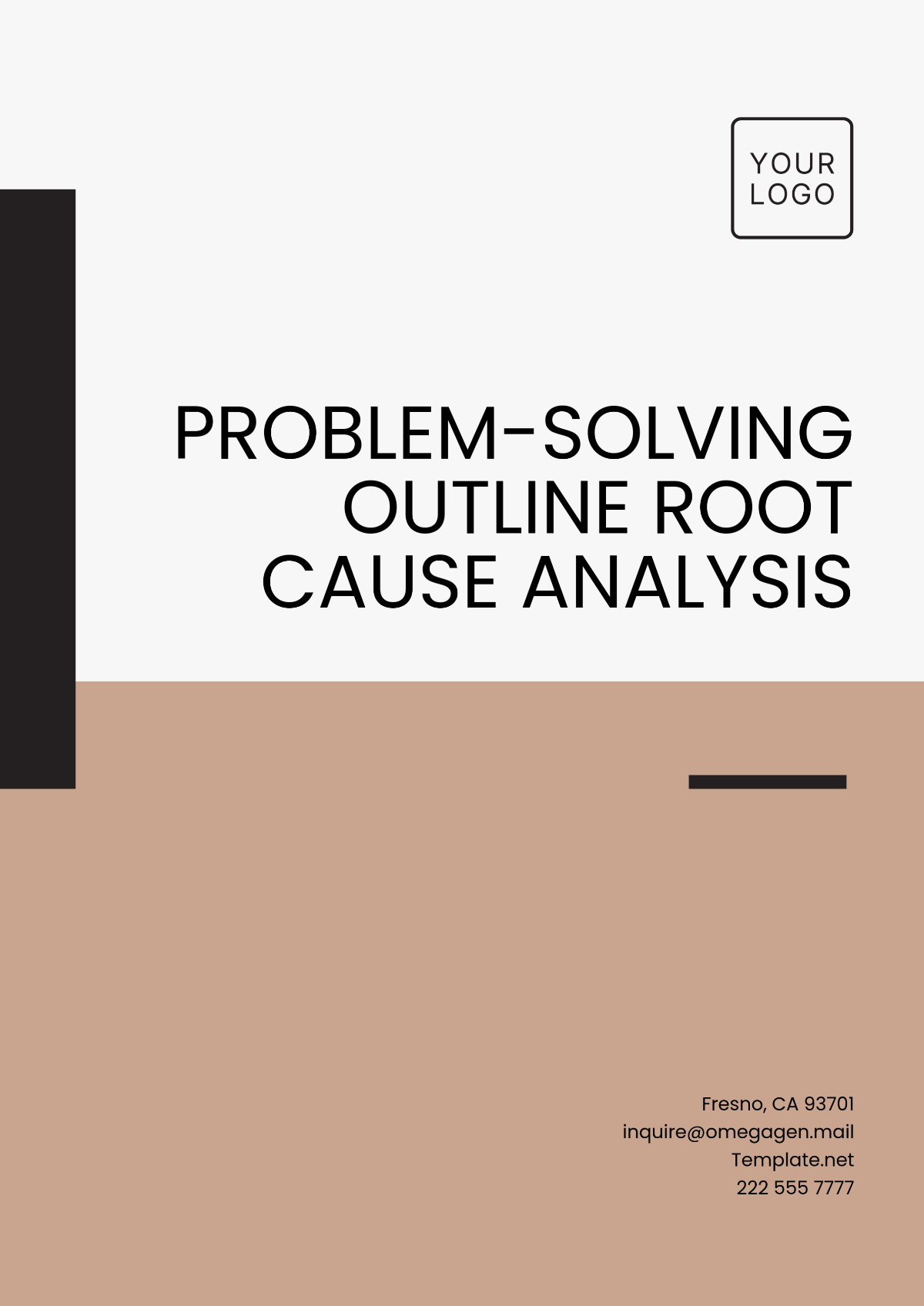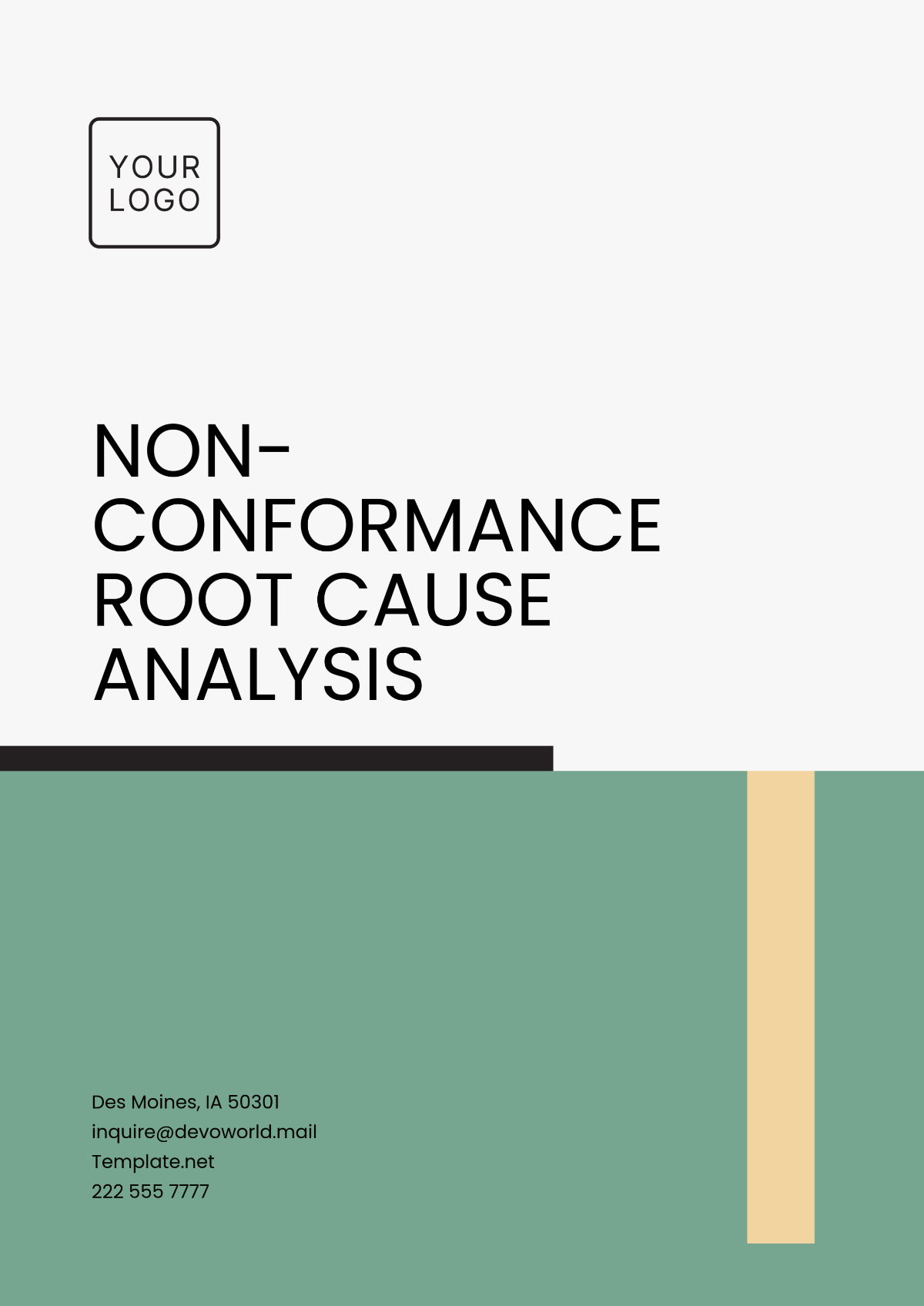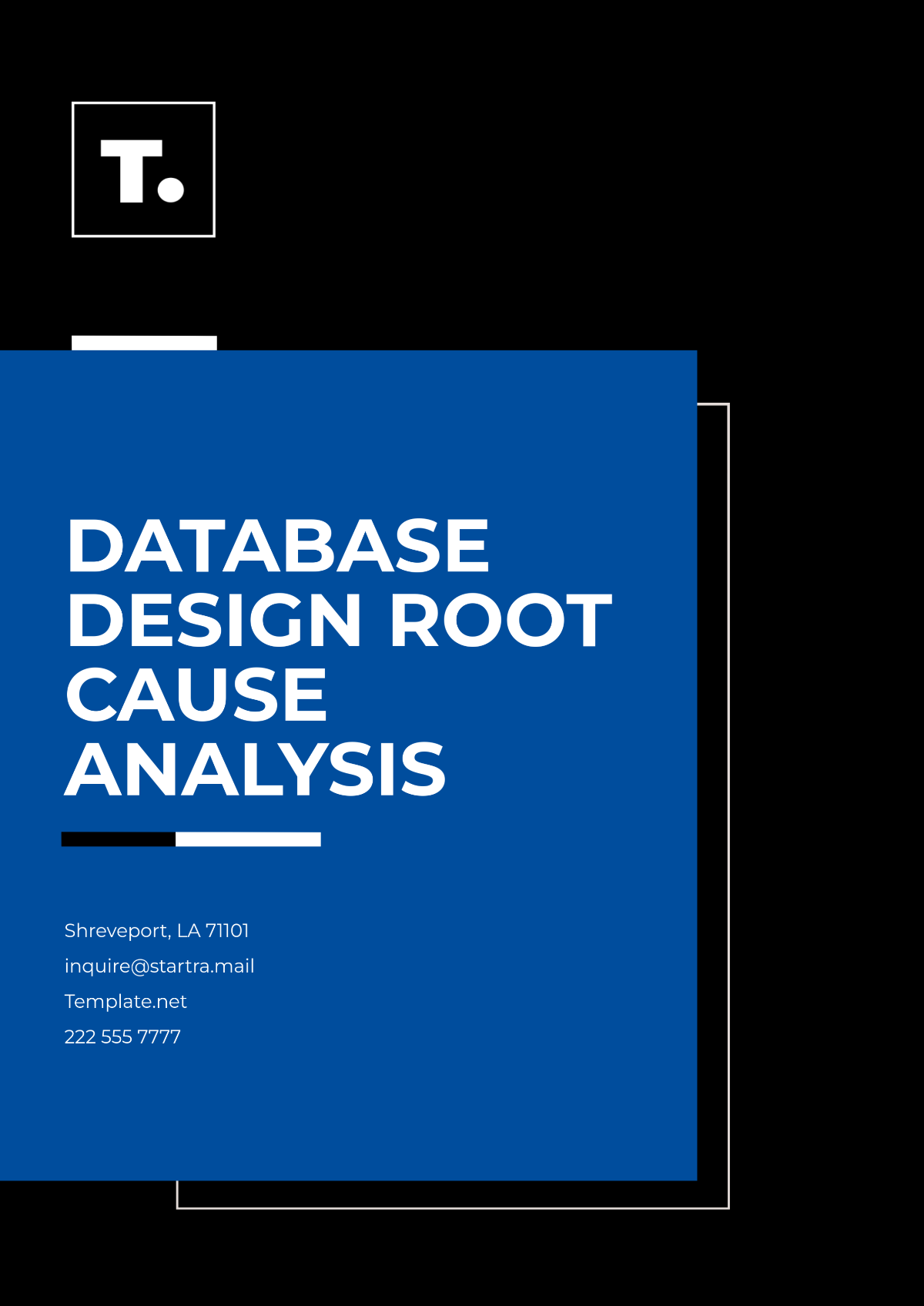Root Cause Analysis Report
Prepared by: [YOUR NAME]
Company: [YOUR COMPANY NAME]
Department: [YOUR DEPARTMENT]
Date: [CURRENT DATE]
I. Introduction
In the Quality Improvement Report, our aim is to delve into the root causes of defects or errors in [YOUR COMPANY NAME]'s products or services. This report template serves as a structured framework to identify underlying issues and implement corrective actions to prevent recurrence. By conducting a comprehensive root cause analysis, [YOUR DEPARTMENT] can enhance product quality, improve customer satisfaction, and optimize operational efficiency.
II. Problem Statement
The first step in the root cause analysis process is to clearly define the problem or issue at hand. In this section, provide a detailed description of the defects or errors observed in [YOUR COMPANY NAME]'s products or services. Include relevant data such as the frequency of occurrences, impact on customers or stakeholders, and any associated costs or losses.
Example:
Problem Description: The recent increase in customer complaints regarding [SPECIFIC PRODUCT/SERVICE] defects has raised concerns about product quality and reliability.
Frequency: Over the past [TIME PERIOD], [NUMBER] incidents of [DEFECT/ERROR] have been reported, resulting in [CONSEQUENCES].
Impact: These defects have led to [NEGATIVE CONSEQUENCES], including [LOSSES/CUSTOMER DISSATISFACTION].
III. Root Cause Analysis
In this section, we will systematically analyze the root causes of the identified defects or errors. Utilizing techniques such as the 5 Whys, Fishbone Diagram, or Failure Mode and Effects Analysis (FMEA), we will uncover the underlying factors contributing to the problem.
Key Steps:
Define the Problem: Clearly articulate the problem statement to focus the analysis.
Collect Data: Gather relevant data and information related to the issue, including customer feedback, production records, and quality assurance reports.
Identify Possible Causes: Brainstorm potential causes of the problem using techniques such as brainstorming sessions or cause-and-effect analysis.
Root Cause Analysis: Analyze the identified causes to determine their root causes, focusing on factors that are within [YOUR COMPANY NAME]'s control and influence.
Validate Root Causes: Verify the identified root causes through data analysis, expert opinions, or experiments to ensure accuracy and reliability.
IV. Findings
Based on the root cause analysis conducted, this section presents the findings of the investigation into the root causes of defects or errors. Provide a summary of the key findings, including the primary root causes identified and their impact on product quality.
Primary Root Causes:
[ROOT CAUSE 1]
[ROOT CAUSE 2]
[ROOT CAUSE 3]
Impact on Quality:
The identified root causes have a significant impact on product quality, leading to [NEGATIVE CONSEQUENCES].
V. Recommendations
In this section, propose actionable recommendations to address each root cause and prevent future occurrences of defects or errors. Provide specific actions that [YOUR COMPANY NAME] can take to mitigate the identified root causes and improve product quality.
Recommendations:
Implement Process Improvements: [SPECIFIC ACTION] to address [ROOT CAUSE 1].
Enhance Training Programs: [SPECIFIC ACTION] to mitigate [ROOT CAUSE 2].
Establish Quality Control Measures: [SPECIFIC ACTION] to prevent [ROOT CAUSE 3].
VI. Implementation Plan
In this section, outline the implementation plan for executing the recommended actions. Specify the responsible parties, timelines, and resources required for each action item. Additionally, establish key performance indicators (KPIs) to measure the effectiveness of the implemented solutions and monitor progress over time.
Implementation Steps:
Action Item 1:
Assign responsibility to [RESPONSIBLE PARTY] to implement [SPECIFIC ACTION].
Timeline: [START DATE] to [COMPLETION DATE]
Resources: [BUDGET, PERSONNEL, TOOLS]
KPIs: [METRICS TO MEASURE SUCCESS]
Action Item 2:
Coordinate with [STAKEHOLDERS] to [SPECIFIC ACTION].
Timeline: [START DATE] to [COMPLETION DATE]
Resources: [BUDGET, PERSONNEL, TOOLS]
KPIs: [METRICS TO MEASURE SUCCESS]
Action Item 3:
Monitor progress and adjust strategies as needed based on [FEEDBACK/RESULTS].
VII. Conclusion
In conclusion, the Root Cause Analysis Report provides valuable insights into the underlying factors contributing to defects or errors in [YOUR COMPANY NAME]'s products or services. By implementing the recommended actions outlined in this report, [YOUR DEPARTMENT] can effectively address the root causes and drive continuous improvement in product quality and customer satisfaction.

